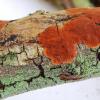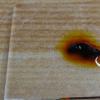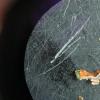
16-12-2015 17:21
Alessandro Fellinon fallen branch (think Crataegus) on the ground i

16-12-2015 08:18
 Blasco Rafael
Blasco Rafael
Hola Tengo esta muestra recogida ayer sobre agujas

15-12-2015 09:51
Garcia SusanaHi:I have found these apothecia whose characterist

12-12-2015 19:36
En bordure de route dans la forêt de Pinus halepe

15-12-2015 10:35
Hi all, Has somedy some informations about the im

15-12-2015 10:25
Hi to everybody I'd like to know the page of Denn

14-12-2015 22:02
 Alan Rockefeller
Alan Rockefeller
I saw this small orange asco in Nevada City, Calif

14-12-2015 05:07
I found this nice fungus on twig on ground, in Ott
Hypoxylon ticinense...?
Alessandro Fellin,
16-12-2015 17:21
Ascospores: light brown, 4.5-7x 2.5-3.5, inequilateral, perispore dehiscent in KOH
Asci: 70-90 lenght x 4-5.5 broad, with apical ring weakly amiloid
Jacques Fournier,
16-12-2015 17:33

Re : Hypoxylon ticinense...?
yes Alessandro,
there is no possible confusion.
Jacques
there is no possible confusion.
Jacques




